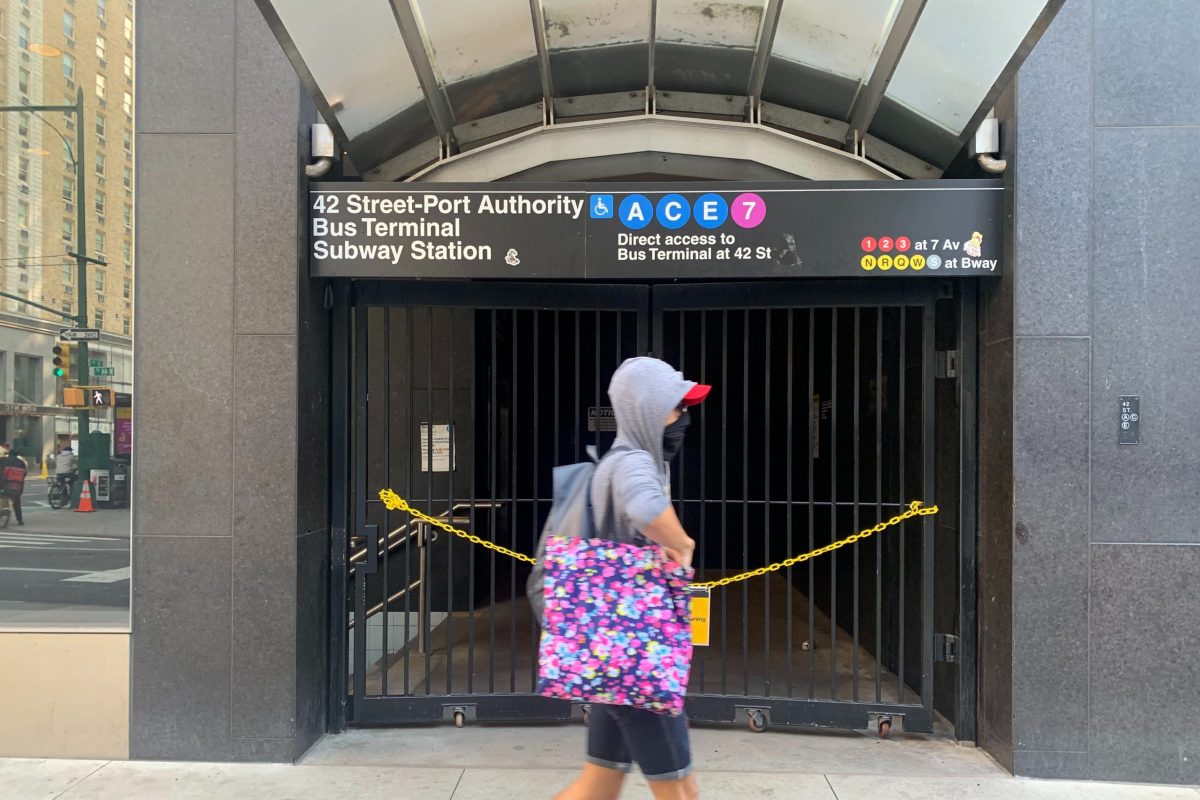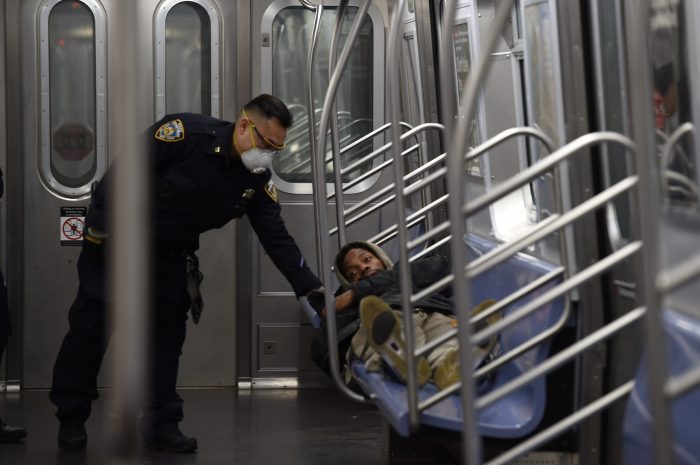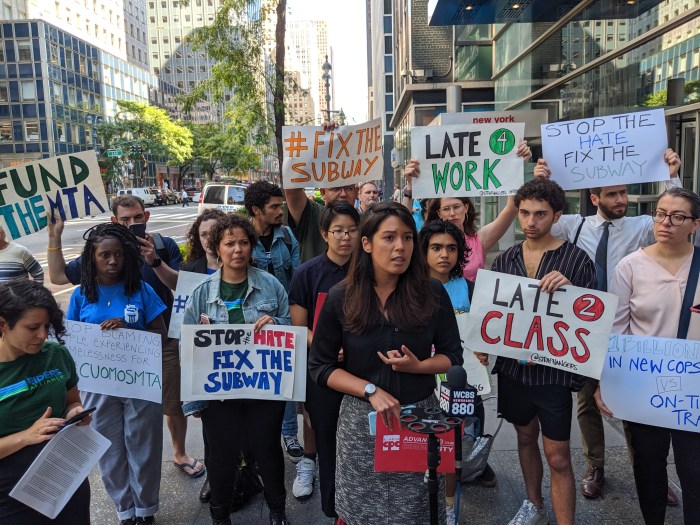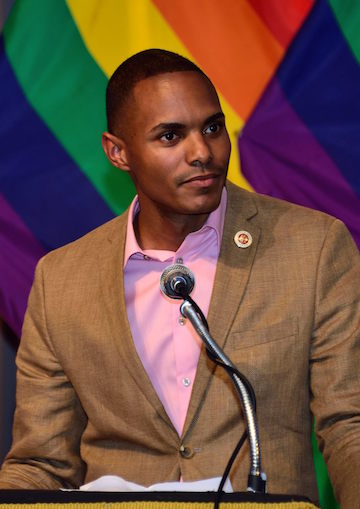BY JOSE MARTINEZ, THE CITY This article was originally published on by THE CITY
Even as more New Yorkers return to their offices and the subway system, nine privately maintained station entrances in Midtown and Lower Manhattan remain off-limits to riders more than six months into the pandemic.
The gateways — which include multiple entrances to the sprawling Fulton Street complex, along with 42nd Street-Bryant Park and 42nd Street/Port Authority — were closed by the MTA early in the coronavirus crisis at the request of building owners, an agency spokesperson said.
The entrances have stayed closed, even as estimated daily ridership has grown to 1.7 million daily trips, slowly climbing back to about 30% of 2019 levels. The entryways are among approximately 150 in a 472-station system where upkeep falls to owners of neighboring offices or hotels and not the MTA.
Business leaders believe reopening the station entrances, most of them attached to office buildings, would add to the accessibility and safety New Yorkers are looking for before returning to Midtown en masse.
“We’re really trying to encourage people to come back,” said Barbara Blair, president of the Garment District Alliance, which represents businesses and property owners from 35th to 41st streets, between Fifth to Ninth avenues. “You want to see an environment in the subway where people don’t feel trepidation, where it feels like the city is somewhat getting back to normal.”
She pointed to the shuttered privately maintained entrance at 39th Street and Sixth Avenue — which connects to the 42nd Street-Bryant Park station and is at the base of 7 Bryant Park.
“I keep wondering when it is going to reopen,” said Frank Heller, 47, who uses the station daily.
‘Nowhere to Go’
Street-level barricades block the entrance to a long station passageway that was popular with the homeless.
Jacquelyn Simone, a policy analyst with Coalition for the Homeless, said the closing of privately maintained station entrances and the overnight subway shutdown are signs of the city’s failure to provide more housing options for the unsheltered.
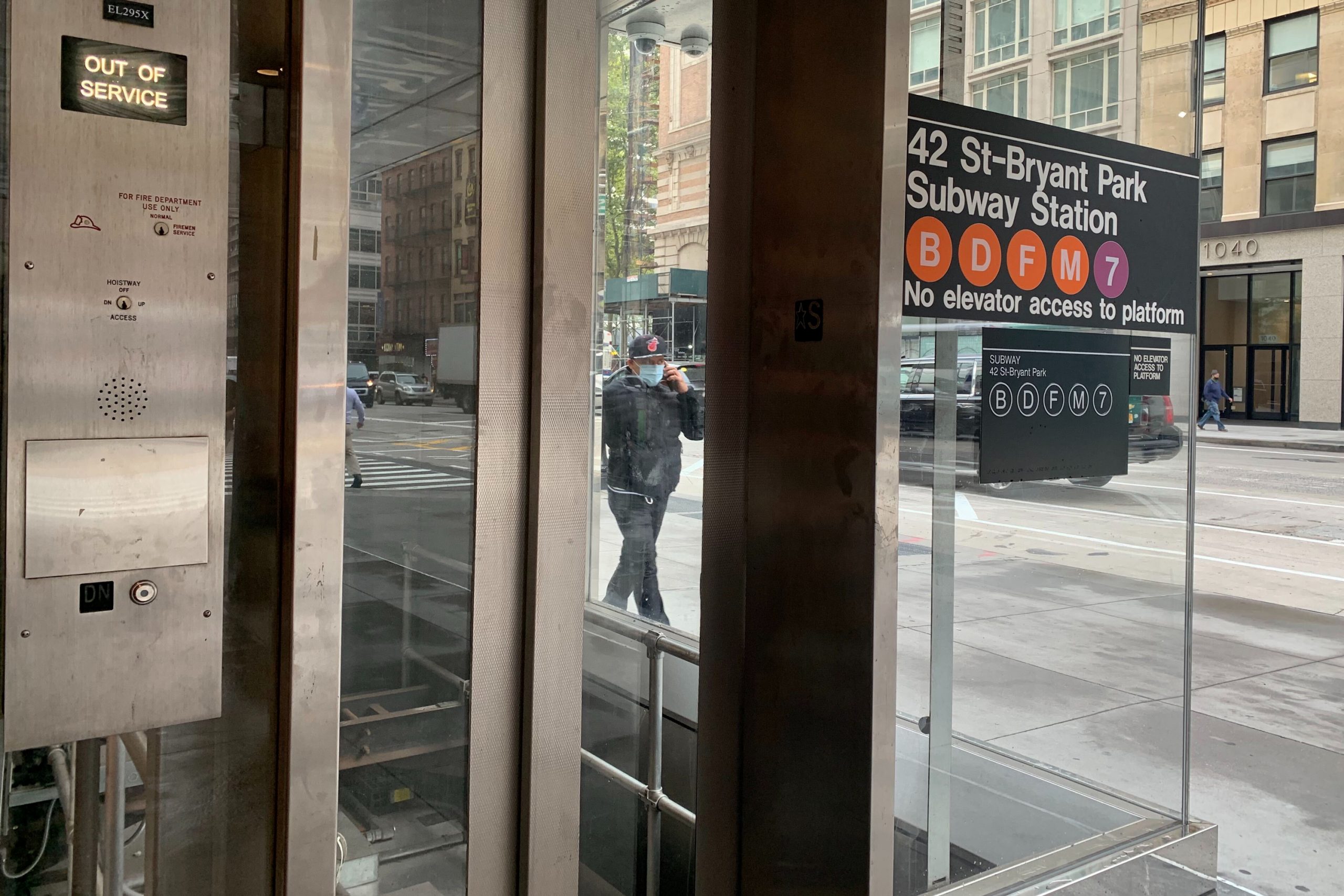
An elevator leading to the 42 St.-Bryant Park Station was still closed on Sept. 25, 2020.
“Closing entrances and closing facilities where the homeless are taking refuge is not going to change the fundamental reality that too many New Yorkers have nowhere to go,” Simone said. “To be constantly chased from one area to another is incredibly dehumanizing.”
The closed entrances also force some commuters to extend their walks.
“Now I take the stairs and have to walk a little more to get to work, but I can do that,” said Reina Rojas, 45, who works south of Bryant Park. “What about those people who need to take the elevator because they have a disability or are carrying things?”
A representative for 7 Bryant Park, home to the Bank of China, did not respond to a request for comment.
Elevator Access Denied
The 39th Street entrance at 7 Bryant Park, along with one on the southwest corner of 44th Street and Eighth Avenue which leads to 42nd Street/Port Authority, are the two privately owned entrances where closures during the pandemic have also cut off elevator access into the subway.
The 44th Street subway entrance and the elevator, next to the Intercontinental New York Times Square hotel, are owned by West 44th Street Hotel LLC, which did not return calls.
Colin Wright of the advocacy organization TransitCenter said it’s “inexcusable” that privately maintained station entrances with elevators remain closed.
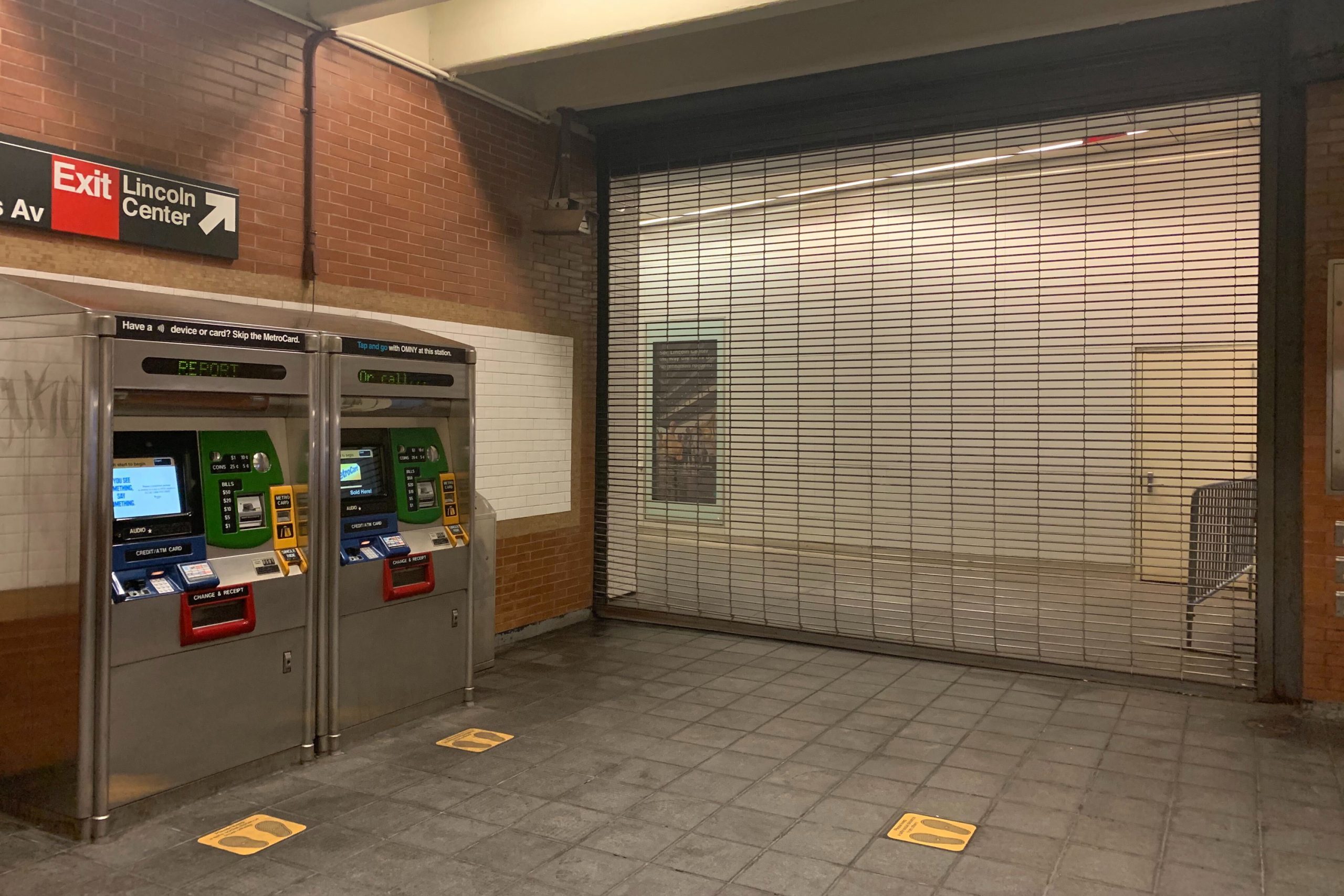
A privately maintained exit leading to Lincoln Center on the 1 line, Sept. 25, 2020.
“Private developers who fail to keep these entrances open add more obstacles to an inaccessible system,” Wright told THE CITY. “Their legal obligation to maintain station access for riders with disabilities did not pause during the pandemic.”
An MTA spokesperson said the agency wants to eventually reopen all entrances and closure decisions were made with property owners and based on station usage. At the peak of the pandemic, subway ridership had fallen by more than 90%.
“Although these closures have improved safety and cleanliness at the stations in question, we nonetheless plan to revisit with the private owners the status of those entrances as ridership increases,” said the MTA’s Andrei Berman.
Kal-El Aguirre, who has been spending recent nights on the street in Midtown, said he understands all too well why property owners have sealed off some station entrances.
“If it were open, I would probably be there,” said Aguirre, 39.
Here are the closed privately maintained subway entrances, all in Manhattan:
- 110 William St. (Fulton Street)
- 150 William, aka 95 Fulton St. (Fulton Street)
- 33 Maiden Lane (Fulton Street)
- 7 Bryant Park (42nd St-Bryant Park)
- Hotel Pennsylvania (34th Street-Penn Station)
- 60 Wall St. (Wall Street)
- 300 W. 44th St. (42nd Street-Times Square)
- 51 Madison Ave. (28th Street No. 6 train stop)
- 28 Liberty St. (passageway to J/Z Broad Street)
THE CITY is an independent, nonprofit news outlet dedicated to hard-hitting reporting that serves the people of New York.



